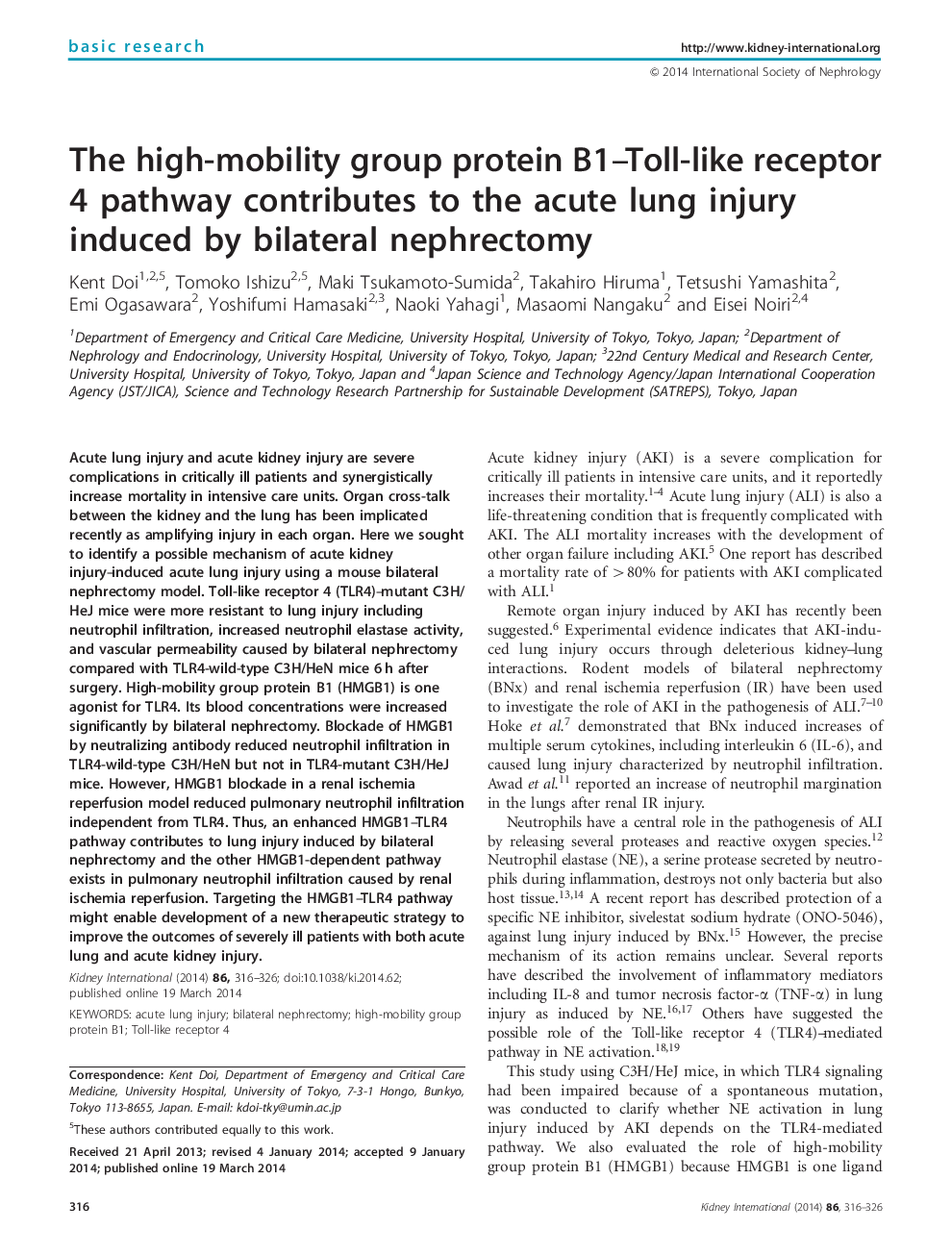| Article ID | Journal | Published Year | Pages | File Type |
|---|---|---|---|---|
| 6164405 | Kidney International | 2014 | 11 Pages |
Abstract
Acute lung injury and acute kidney injury are severe complications in critically ill patients and synergistically increase mortality in intensive care units. Organ cross-talk between the kidney and the lung has been implicated recently as amplifying injury in each organ. Here we sought to identify a possible mechanism of acute kidney injury-induced acute lung injury using a mouse bilateral nephrectomy model. Toll-like receptor 4 (TLR4)-mutant C3H/HeJ mice were more resistant to lung injury including neutrophil infiltration, increased neutrophil elastase activity, and vascular permeability caused by bilateral nephrectomy compared with TLR4-wild-type C3H/HeN mice 6Â h after surgery. High-mobility group protein B1 (HMGB1) is one agonist for TLR4. Its blood concentrations were increased significantly by bilateral nephrectomy. Blockade of HMGB1 by neutralizing antibody reduced neutrophil infiltration in TLR4-wild-type C3H/HeN but not in TLR4-mutant C3H/HeJ mice. However, HMGB1 blockade in a renal ischemia reperfusion model reduced pulmonary neutrophil infiltration independent from TLR4. Thus, an enhanced HMGB1-TLR4 pathway contributes to lung injury induced by bilateral nephrectomy and the other HMGB1-dependent pathway exists in pulmonary neutrophil infiltration caused by renal ischemia reperfusion. Targeting the HMGB1-TLR4 pathway might enable development of a new therapeutic strategy to improve the outcomes of severely ill patients with both acute lung and acute kidney injury.
Related Topics
Health Sciences
Medicine and Dentistry
Nephrology
Authors
Kent Doi, Tomoko Ishizu, Maki Tsukamoto-Sumida, Takahiro Hiruma, Tetsushi Yamashita, Emi Ogasawara, Yoshifumi Hamasaki, Naoki Yahagi, Masaomi Nangaku, Eisei Noiri,
